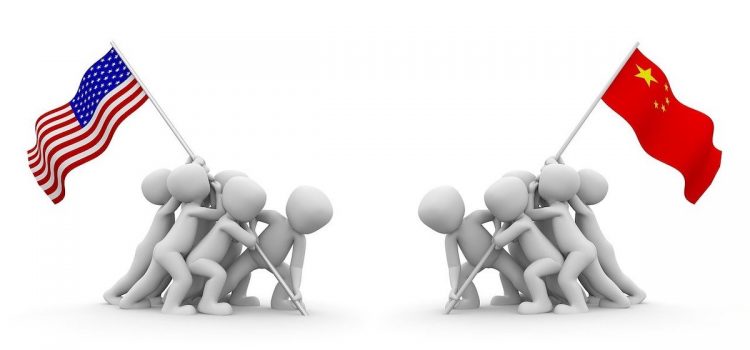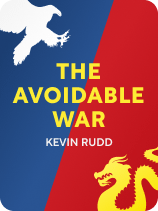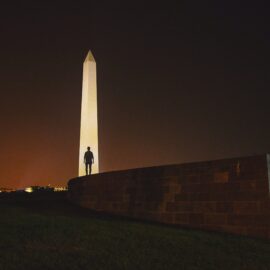

This article is an excerpt from the Shortform book guide to "The Avoidable War" by Kevin Rudd. Shortform has the world's best summaries and analyses of books you should be reading.
Like this article? Sign up for a free trial here.
How did the Opium Wars impact the US? What opened up China to foreign trade and missionaries? Has the relationship between the US and China ever been good?
Hostility between the US and China has been growing for over a decade, eroding the wary but pragmatic relationship of years past. In The Avoidable War, Kevin Rudd explains that today’s situation is best understood in its historical context.
Continue reading for an illuminating history of US-China relations.
Historic Context on the US-China Relationship
The long history between the two countries includes events that have damaged the mutual trust between them as well as the ways they’ve strived to gain mutual benefits. We’ll start with a timeline summarizing key events in the history of US-China relations. (Shortform note: The earliest written records of China date back to 1600 BC during the Shang dynasty, over 3,000 years before the US became an independent nation. Although Rudd briefly discusses China’s early history, diplomatic relations between the US and China began during the mid-1800s, where we’ll start our timeline.)
19th-Century Imperialism: Animosity Between the US and China
The 19th century was an era of imperial expansion for many European nations and the US. During this period, foreign powers annexed Chinese territory and ended its isolationism.
Rudd writes that the First Opium War from 1839 to 1842 was one of the first impetuses for hostility between the US and China. (Shortform note: The First Opium War between China and Britain started when Britain ramped up its illegal exportation of opium from India to China. As the resulting opium addictions in China led to increased social and economic problems, the Chinese government responded by destroying massive quantities of British-owned opium stored in the country. Hostility escalated to a military conflict in which the British ultimately prevailed.)
At the end of this conflict, Rudd explains, Britain forced China to open its ports to international trade. (Shortform note: Britain also took control over China’s state of Hong Kong in the aftermath of this war.)
Rudd explains that, although the US was uncomfortable with this policy of forcing China to open to global trade (because of the policy’s imperialist nature and the US’s anti-colonial history), the US also wanted to benefit from the economic opportunity it would create. (Shortform note: Although Rudd writes that Americans were anti-colonialists, others point out that early Americans settled millions of acres of land that belonged to Indigenous nations. Like the trade with China, this benefitted Americans economically as the settlers turned the land into privately owned parcels and extracted resources like lumber, gold, and animals.)
This open-door policy gave the US access to China for trade and for American missionaries. The presence of missionaries fostered an anti-foreign sentiment in China, particularly among the Chinese elite, who viewed them as cultural interlopers. (Shortform note: Scholars write that Christian missionaries to China in this era wanted to “save” the souls of Chinese people through religious conversion and bring Western values to the country. They tried to win people over in part by offering free education—a prospect that was particularly appealing to those of lower social status in China.)
Rudd says that, from the 1850s through 1900, several foreign powers annexed Chinese states. The territories lost to colonial powers included Vietnam (annexed by France in 1858) and Korea (annexed by Japan in 1895). China condemned the US for refusing to help China resist invasion despite its official policy of supporting China as an independent nation. (Shortform note: Some historians write that the ruling Qing government in China faced several barriers to national security and unity during this period including domestic political divisions, corrupt officials, drug addiction plaguing the citizens, and a lack of military capability. They explain that these factors resulted in a lack of “political will, national authority, popular support, and military strength” to defend their territory.)
Then, in 1882 the US passed the Chinese Exclusion Act—legislation barring Chinese immigration to the US that angered Chinese people in the US and China. (Shortform note: This law was created as a response to Americans’ complaints that Chinese immigrants were causing lower wages and economic problems for US workers. However, Chinese immigrants comprised only 0.002% of the US population at the time. A follow-up law, the Geary Act of 1892, extended the ban on Chinese immigration for 10 more years and required Chinese residents to carry certificates of residency under the threat of forced labor and deportation.)
Rudd writes that another key event in the two countries’ relations was the Boxer Uprising of 1900. He describes this as a violent uprising by Chinese citizens against Christian missionaries and foreign presence in China, including the US, European nations, Russia, and Japan. During the Uprising, Chinese rebels attacked foreign diplomats, and the US and other foreign powers ended the uprising using military force. (Shortform note: Also known as the Boxer Rebellion, the uprising was started by an anti-colonial, anti-Christian, covert Chinese group called the “Society of Harmonious and Righteous Fists.” They were nicknamed “Boxers” because of the martial arts technique they used in their attacks on Chinese Christians and foreigners.)
20th Century: Back and Forth Relations Amid Multiple Wars
The 20th century was characterized by ups and downs in the US-China relationship as a result of American immigration policies, a series of wars that ultimately damaged the two countries’ alliance, and China becoming a nuclear power.
In 1905, the Chinese initiated a boycott of American goods as a direct response to the Chinese Exclusion Act (which was extended in 1902) as well as violence against Chinese immigrants in the US. (Shortform note: In addition to preexisting anger over exclusionary immigration laws and violence against Chinese residents, the boycott was also sparked by a suicide protest that year. A person named Feng Xiawei was wrongfully arrested in Boston and deported to China where he committed suicide on the steps of the US consulate in protest of his mistreatment. The Chinese Exclusion Act was repealed in 1943 and replaced with the Magnuson Act that allowed 105 Chinese immigrants to the US annually.)
Then, in 1917 the US and China entered World War I. Rudd explains that both countries fought against Germany in WWI, with China expecting to regain its German-occupied territory of Shandong at the end of the war. However, when the Allies won and it was time to formally establish a treaty, the US, France, and Britain went back on their word: They rejected all of China’s primary demands—including returning China’s German-occupied territory of Shandong. Instead, the Shandong territory was given to Japan (which also fought with the Allies) as an incentive for Japan to join US President Woodrow Wilson’s League of Nations—a new international governing body.
(Shortform note: This settlement as part of the Treaty of Versailles sparked a student-led protest in China in 1919 called the May 4th movement. It was an anti-imperialist movement that included students and intellectuals who condemned the US’s post-war actions and Western democracy. It also inspired the New Cultural Movement, contributing to the formation of the Chinese Communist Party (CCP) in 1921. (The Chinese government uses the term Communist Party of China (CPC), while media outside of China refer to it as the CCP.) The Shandong territory was later returned to China in 1922 during the Washington Naval Conference in an effort to relieve diplomatic tensions in East Asia.)
From 1939 to 1945, China fought in World War II on the Allied side. For China, the war began when Japan invaded China in 1937. At that time, the US didn’t offer material support for China, although its official diplomatic stance was sympathetic toward China. The US entered the war in 1941 but didn’t deploy troops to China, instead focusing efforts on islands in the Western Pacific (in addition to fighting on the European front of the war). The US ended the war with a nuclear attack on Japan in 1945. In 1947 during the Marshall Mission—a diplomatic effort led by President Harry Truman after the war—the US tried (and failed) to help China create a unified government that would include both Nationalist and Communist Party members.
(Shortform note: Some historians note that the US and other Allied powers prioritized liberating Jews from the Nazi regime over defending China against Japan during WWII. They also argue that the US had an obligation to support the Soviets (part of the Allied forces) at their border with Europe as well. Nonetheless, even without US military reinforcement, the Chinese held 600,000 Japanese troops at bay, suffering 2.2 million Chinese deaths by the end of the war.)
In the aftermath of WWII in 1946, China’s civil war began between the Nationalist Party and the Communist Party. The CCP prevailed in 1949 and officially named the country the People’s Republic of China (PRC). The Nationalists (the opposing political group) fled to the island of Taiwan and created a separate government they called the Republic of China (ROC). After the Chinese civil war ended, both the Nationalist ROC in Taiwan and the Communist PRC on the mainland claimed that they were the legitimate Chinese government.
| History of Taiwanese Sovereignty and Recognition The island of Taiwan was under Chinese control starting in the 1600s during the Qing dynasty. It was then ceded to Japan after the first Sino-Japanese War in 1895, and China reclaimed it after WWII. When the Chinese Nationalists established the ROC in Taiwan after the civil war, its sovereignty was contested since the CCP claimed that the PRC was the official Chinese government. In contrast to the CCP’s platform of communism and land reform that would benefit the lower economic classes, the platform of the Nationalist Party (leading the ROC) promoted nationalism, democracy, socialism, and policies that benefited landowners and businesspeople. In 1971, the United Nations (UN) removed Taiwan from its governing body and recognized the (Communist) PRC as China’s officially recognized government, as opposed to the Nationalist ROC established in Taiwan in 1949. Although the US initially recognized the ROC in Taiwan as an independent nation for 30 years, it reversed this decision in 1979 when relations between the US and China were normalized (discussed later in the timeline) and the US recognized the PRC as the official Chinese government. However, in 1979 the US also established the Taiwan Relations Act, stating that a military attack on Taiwan would be considered an attack on US interests. These policies demonstrate the US’s ongoing strategy of balancing diplomatic ties with both China and Taiwan. Today, 13 countries (not including the US) recognize Taiwan as a sovereign country. |
Rudd writes that the next key event happened when China entered the Korean War in 1950. China unofficially declared war on the US by supporting North Korea after Americans crossed the 38th parallel in Korea (a demarcation at 38 degrees of latitude north of the equator). During this time, China also launched a domestic anti-American propaganda campaign.
(Shortform note: This campaign was known as the “Resist America, Aid Korea” campaign, aimed at fostering nationalism and a sense of duty toward helping North Koreans fight the US. Some scholars write that CCP officials tried to instill fear and animosity toward the US through newspaper articles, rallies, and elementary school curricula. In 1953, the Korean War ended with a cease-fire and a demilitarized zone at the 38th parallel.)
Next, Rudd explains that a conflict in the Taiwan Strait in the 1950s further damaged China-US relations. During this incident, US President Dwight Eisenhower threatened nuclear attacks on China in retaliation for China’s military attacks on Taiwan and other islands.
(Shortform note: In 1953, Eisenhower withdrew naval forces from the Taiwan Strait, which were there to deter conflict between the PRC and the ROC in Taiwan. According to one source, after US forces withdrew from the Taiwan Strait, the ROC disrupted shipments heading for mainland China, which then retaliated and killed two American military personnel in the process. According to the US government’s account, the conflict began when the PRC bombed the island of Jinmen. As attacks worsened, Eisenhower issued nuclear threats and signed a mutual defense treaty with the ROC. As a result, the PRC backed down and began diplomatic talks with the US.)
In another major development, China gained nuclear weapons in 1964. Rudd writes that China’s official stance has been to use its nuclear arsenal as a deterrent against nuclear attacks by Russia and the US. However, he also contends that given the recent increasing tensions between the US and China, this may not continue to be true (implying that China may consider an offensive nuclear attack). Over the last several years, China has significantly expanded and upgraded its nuclear arsenal.
(Shortform note: Although China’s nuclear power was previously considered negligible compared to that of the US and Russia, some estimate that China’s nuclear arsenal will be on par with that of the US by the 2030s. The only treaty currently in place to curb the expansion of the US’s and Russia’s nuclear arsenals (the two largest nuclear powers) expires in 2026, and some experts say that China is unlikely to join a similar treaty.)
US and China Establish a Formal Diplomatic Relationship
After years of oscillating alliances and tensions, the US and China formally normalized their diplomatic relationship in 1979. Under the leadership of US President Richard Nixon, the two countries established a working relationship for practical economic and political reasons.
The process of opening relations with China started years earlier in 1971, when the US still hoped for an ally in East Asia to help end the Vietnam War. China had initially supported the Viet Cong in North Vietnam during the war but later reduced its military aid in the form of weapons and training. The US also wanted to have China as an ally to gain leverage over the Soviet Union in negotiating arms control agreements. Lastly, the US hoped that as China’s economy grew it would eventually liberalize—meaning it would engage in free trade, which would benefit the US economically.
On the other hand, China hoped that the US would protect it from potential military aggression from the Soviet Union, provide China with military intelligence and equipment, and boost China’s economy through temporary trade relations. China’s relations with the Soviet Union had collapsed throughout the 1950s-1960s (a rift partly caused by differing political ideologies between Soviet leader Nikita Khrushchev and Chinese Chairman Mao Tse-tung), leaving China in a desperate financial situation when the Soviet Union ended its economic aid. This made China even more keen to strengthen economic ties with the US.
Early Flaws in the Pragmatic Relationship
Rudd emphasizes that this mutually beneficial partnership between the US and China led to a key misunderstanding in the two countries’ relationship. The US expected that, because a trade relationship between them was emerging, China was on its way to becoming a liberal, capitalist, democratic state like the US. On the other hand, China—which was now ruled by the CCP—viewed the US as a necessary and temporary measure to build an economically self-sufficient, communist state in the long term.
For China, trade relations with the US weren’t a sign of its fundamental transformation into a democratic, capitalist state. China’s resistance to significant political reform has been evident over the years in events such as Tiananmen Square, in which the Chinese military violently suppressed a protest in 1989 by students demanding democratic reform.
Another sticking point in their diplomatic relations was the issue of Taiwanese sovereignty. China wanted to regain full control over the island of Taiwan, which had formed a separate government ruled by the Nationalist Party that fled mainland China after the Chinese civil war. The US hindered this goal by establishing diplomatic relations with Taiwan and providing them with military assistance. Although military and economic cooperation continued between the US and China, the Taiwan issue would continue to stymie relations between the US and China for decades.
Exercise: Reflect on the History of US-China Relations
Reflect on the history of US-China relations by answering this question:
- In the brief history of the key events in the China-US relationship, were there any historical events that you didn’t know about before or were surprised by? Explain why.

———End of Preview———
Like what you just read? Read the rest of the world's best book summary and analysis of Kevin Rudd's "The Avoidable War" at Shortform.
Here's what you'll find in our full The Avoidable War summary:
- The complex factors contributing to hostility between the US and China
- How a military conflict between the US and China can be avoided
- The huge toll a US-China war would take on global stability






